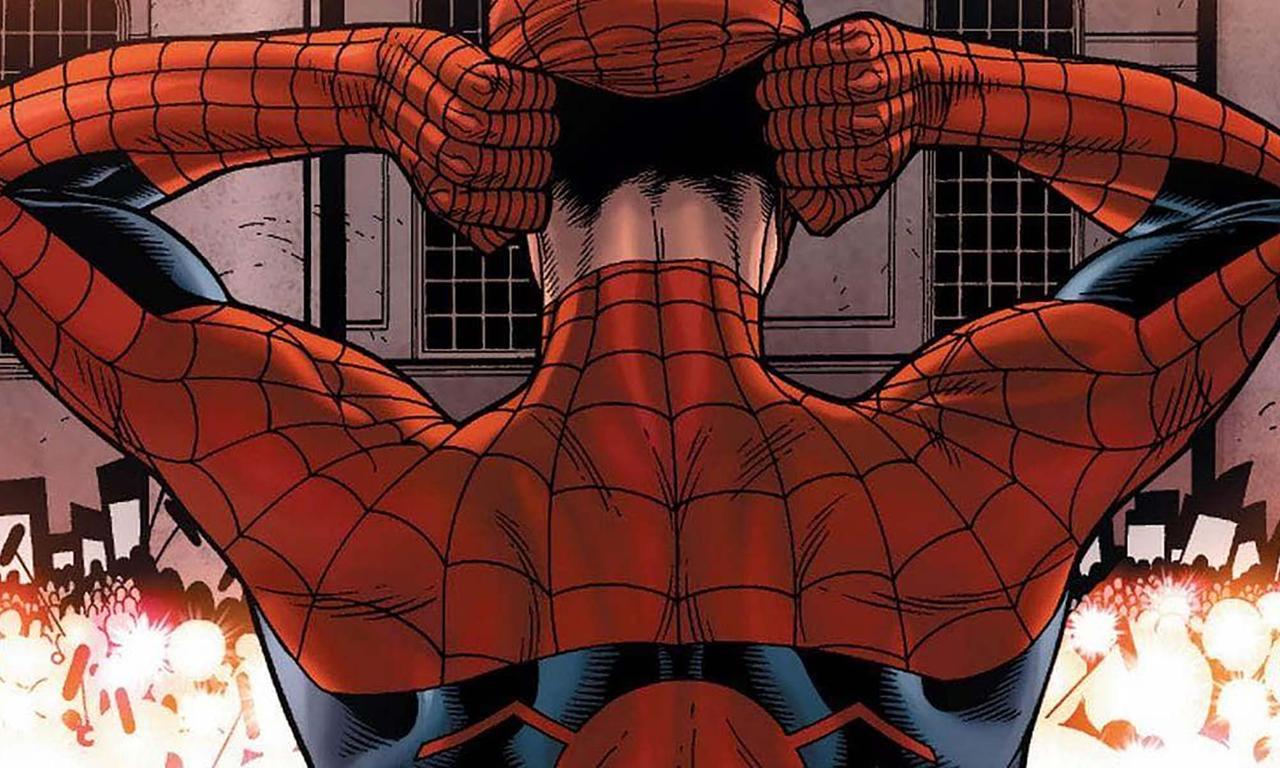If you click on a link and make a purchase we may receive a small commission. Read our editorial policy.
Putting the mask back on: how comic book characters have regained their secret identities
Superman just got his secret identity reset. How has that gone for other super heroes?

Recently in Action Comics #1050, Superman was forced to take back on his secret identity as part of Lex Luthor’s latest evil plan. Now, not only does almost no one remember he is Clark Kent, if they learn that information it may kill them.
Over the years many heroes have had their secret identities revealed at one time or another. In some cases, like Dazzler, Iron Man, or Professor X, those changes became a permanent part of the character going forward. It’s hard to even remember at this point that for most of Charles Xavier’s history he was desperate to keep his mutant identity a secret.
But in other cases, the companies have decided to give the heroes back their secret identity, usually in pretty short order, as DC is doing with Superman. It’s a risky move; having invested so much in making that kind of reveal work in the first place, trying to put the genie back in the bottle could easily create whiplash for readers.
But looking at some of the most significant resets, while there are some variations in terms of the mechanism, it turns out they usually work out pretty well. (And when they don’t, it’s not because of the reset.)
Spider-Man (2006)

Other than Superman and maybe Batman, no character has been more invested in keeping their identity a secret than Spider-Man. And Peter Parker’s argument has always been the most compelling: to reveal his identity would put those he loves at risk, especially his Aunt May and Mary Jane. The 1973 death of Gwen Stacy at the hands of the Green Goblin certainly gave Peter all the evidence he would ever need that he was right.
So when he willingly revealed his identity on live television in Mark Millar and Steve McNiven’s Civil War #2, it was startling, maybe the biggest secret identity reveal ever (or at least until 2019's Superman #18).
But within Spider-Man’s reveal also lay the seeds of its own demise. Peter acted to support Tony Stark’s position that super heroes are public figures and as such need to be registered. But as Civil War went on — and Stark was revealed to have created an insane fascist clone of Thor, who promptly killed Giant Man — it became clear that Peter had backed the wrong guy. By the end of the series he was fighting against Tony instead of with him.
Just as he had always feared, the reveal of his identity put a target on his family. Aunt May gets shot on the order of Wilson Fisk, and in the end neither science nor magic can save her. From noble intentions to horrifying consequences, it’s a classic Peter Parker story.
Unable to live with the idea of having been responsible for her death, in J. Michael Straczynski and Joe Quesada’s Amazing Spider-Man #545, Peter and Mary Jane agree to a deal with Mephisto, Marvel’s version of the Devil: their marriage is erased from the timeline, in exchange for Aunt May’s survival. At Mary Jane’s insistence Mephisto agrees to erase people’s knowledge of Peter’s identity as well.
The reset, which led to a whole new start for Spider-Man called 'Brand New Day,' was not well received. Randomly bringing in Mephisto to fix Peter’s mess was considered Deus (er, Daemonium) ex Machina in the extreme. But the heart of readers’ problems was not the identity reset, but the sudden and total erasure of Peter’s married relationship with Mary Jane. After years spent building that relationship, to see Peter go from happily married to canoodling with some rando lady on page one of the next issue was just too much for readers.
If Mephisto had been used simply to reset Peter’s identity, at some other cost—May lives but now will never forgives him for Ben (think of the guilt!); May lives but Peter now works for Mephisto (think of the costumes!); May lives but Mary Jane and Peter are told their relationship is now doomed (think of the mind fuckery!)—the event may have gone down just fine.
Daredevil (1965, 1966, 1972, 1986, etc, etc.)

No character has had more drama around their secret identity than Daredevil. In fact, it’s been more or less baked into the character from the beginning. As Scoot Allan noted in his great look at all of Daredevil’s secret identity reveals, as early as Daredevil #9 a scientist figured out Matt was Daredevil. And just 16 issues later Spider-Man accidentally revealed the same to Foggy Nelson and Karen Page. Matt ended up having to make up a twin brother, Mike Murdock, to save his secret.
Having others pretend to be Daredevil would end up becoming Matt’s go-to move. So after a random San Francisco TV reporter noted that both Murdock and Daredevil were now in San Francisco, and both had been seen with Black Widow — seriously, Matt? — in Daredevil #92, Murdock got Black Panther to wear a Daredevil costume at a location to which Matt then showed up. Decades later, Brian Michael Bendis and Alex Maleev’s Daredevil Vol. 2, after an FBI agent leaked to the press that they had proof Murdock was Daredevil, Iron Fist started posing as him.
Over the course of his history Matt has also had his identity sold to the Kingpin by his Karen after she got hooked on drugs; had Ben Urich’s assistant leak it to the press, which led to him faking his death and taking on a new identity, before finally fixing the problem with yet another body double; told his secret identity to pretty much anyone he has ever slept with; and, when the Serpent Society got a hold of the Kingpin’s information on Daredevil and tried to blackmail Murdock, in Mark Waid and Chris Samnee’s Daredevil vol. 3 #36, Matt revealed the truth on the stand in a televised court proceeding, destroying his legal career in New York.
Eventually the super powered children of mind-controlling Purple Man, whom Matt had helped, decided without his knowledge to wipe the world’s memory of his secret identity, thinking it would help him. But in the process they erased his friends’ memories as well, screwing up all of his relationships.
Here’s the weird thing: despite the volume and repetition of Daredevil secret identity stories, they usually tend to work. Probably that’s because they fit into Matt Murdock’s larger pattern of risky, exhibitionist, and usually self-destructive behavior. Unlike Peter Parker or Clark Kent, Matt Murdock loves two things: drama, and to suffer. (Did I mention that he’s Catholic?)
Nightwing (2013)

Near the end of the first issue of Forever Evil, DC’s first big line-wide event in the 'New 52' era, Nightwing was unmasked as Dick Grayson on national television by Earth-3’s Crime Syndicate. It could have been a big deal for Dick and the whole Bat family, but its potential significance was effectively eliminated when the event ended with Dick supposedly killed by a bomb planted in his heart.
Instead, that event launched Grayson into a new secret identity as Agent 37, secret agent of Spyral, in a gorgeous book that made the world remember Dick’s charm as a character, and also his very-handsomeness. (The book was drawn by Mikel Janin and co-written by Tim Seeley and Tom King.) The end of that series would see knowledge of Grayson’s identity erased from all humanity via a bad guy’s spy satellite, allowing him to return to his original dual identity.
Nightwing would actually lose his identity again pretty quickly, this time by way of brain damage, leading to one of the character’s most depressing runs. (The number of 'Ric Grayson' tattoos is definitely zero.) But with that era thankfully over, Tom Taylor and Bruno Redondo have now been building on the fun, (sexy), hopeful, (sexy) version of the character from Grayson. Truly, there’s no 'Nightwing is the heart of the DC Universe' moment at the end of DC’s recent Dark Crisis on Infinite Earths without Grayson.
Superman (2015)

Yes, that’s right, the current Superman storyline is the second time that Superman had his identity revealed and then reset in the last six years. During the 'New 52,' Lois Lane had telepathy for a minute, then had her memories erased, but then Clark told her who he was again, and she promised to keep his secret, then outed him that same issue as a way of protecting him from some baddies trying to blackmail him.
Then he and all his friends were in danger, because his powers were messed up, and Perry got shot. So Clark went on TV and said if anyone hurt his friends he would hurt them a thousand times worse. And then he was dying (from reasons), but meanwhile the Superman and Lois from before New 52 showed up and when 'New 52' Superman died Mr. Mxyzpltk sort of fixed everything so there was only one Lois and Clark and they had a kid and no one remembered Clark was Superman, I don’t know, the 'New 52' really hurt my brain.
Follow Popverse for upcoming event coverage and news
Find out how we conduct our review by reading our review policy
Let Popverse be your tour guide through the wilderness of pop culture
Sign in and let us help you find your new favorite thing.
















Comments
Want to join the discussion? Please activate your account first.
Visit Reedpop ID if you need to resend the confirmation email.